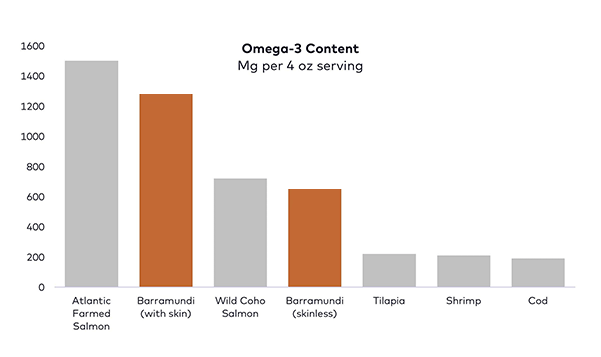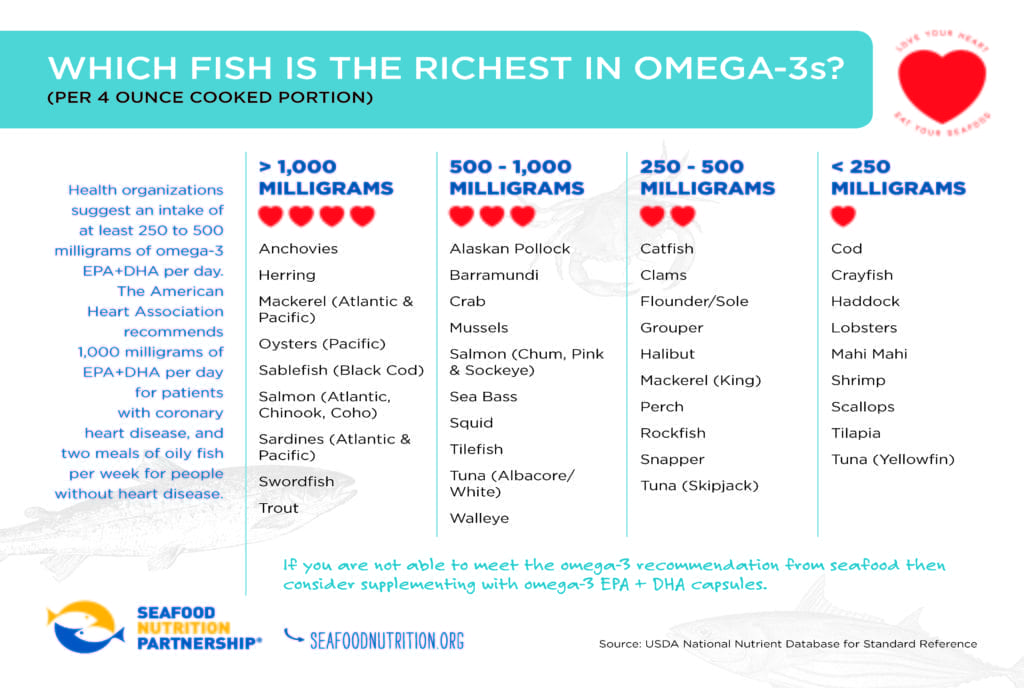Why Should I Care About Omega-3s?

You’ve likely heard that you should be getting more omega-3’s into your diet. But what are they, and why should you pay any attention to them?
Omega-3s 101
Omega-3s are a family of polyunsaturated fats that play an important role in repairing your cells and reducing inflammation. They also play a crucial role in brain function. Omega-3s contribute to:
- Maintaining healthy cell membranes
- Making the hormones that regulate blood clotting
- Supporting blood sugar balance
- Contracting and relaxing the artery walls
- Helping the heart beat at a steady rate (helps prevent heart disease and stroke)
- Controlling lupus, eczema and rheumatoid arthritis
- Supporting brain blood flow
- Protecting the body from cancer
- Lowering blood pressure
- Improving blood vessel function
- Supporting cognition, including memory
- Reducing premature births

Omega-3s are essential fatty acids
They are considered essential because your body doesn’t produce them for you so you must get them from the foods you eat.
Most Americans don’t get enough omega-3’s. We are far more likely to consume omega-6’s, which are found in poultry, eggs, wheat, vegetable oils, nuts, and seeds.
“Our intake of omega-6s is the highest it has ever been in the history of mankind because we consume large amounts of omega-6 oils like soybean oil and sunflower oil from packaged foods and eating out. Most Americans consume a ratio of 20:1 omega-6s to omega-3s, and medical professionals suggest this ratio be between 1:1 and 4:1. This is why so many people in America are inflamed, overweight, and sick.” explains Functional Medicine Dietitian, Taylor Stolt.
Consuming enough omega-3s and decreasing our omega-6 intake from processed vegetable oils can help combat inflammation, improve heart health, boost brain power, balance hormones, and more.
Where can you get these highly desirable omega-3s?
There are three kinds of fatty acids that make up the “Omega-3s”: Eicosapentaenoic acid (EPA), Docosahexaenoic acid (DHA), and Alpha-linolenic acid (ALA)
EPA and DHA are mainly obtained through fish and shellfish—think sardines, salmon, barramundi, arctic char, mackerel, anchovies, oysters, and mussels. The third, ALA, is found in vegetable oils, flaxseeds and flaxseed oil, hemp seeds, chia seeds, walnuts, leafy vegetables (brussels sprouts, kale, spinach and salad greens) and some animal fat from grass-fed animals. However, ALA generally lacks the direct health benefits of EPA and DHA.
“Our body can convert ALA to DHA and EPA, but it isn’t an efficient process and only a small percentage is successfully converted. The most effective way to boost your body’s DHA and EPA levels is to consume omega-3 rich fish on a regular basis,” says Stolt.
DHA is especially important for children. It is primarily responsible for most of the benefits of consuming Omega-3s, including supporting heart health.
According to Dr. Frank Sacs, Professor of Cardiovascular Disease Prevention at the Harvard School of Public Health, we should aim to get at least one healthy dose of Omega-3s into our diet every day. You can also get Omega-3s through supplements, but the foods that are rich in Omega-3s are also good sources of other nutrients and eating them helps to shift our diets away from less desirable fats. (In other words, if we’re eating fish for dinner, we’re not eating pizza!)
“I recommend consuming a serving of fish high in omega-3s, such as salmon or barramundi, at least twice per week for general health and wellbeing. If you’re dealing with an inflammatory condition like arthritis, headaches, migraines, etc. you would want to consume more. You can also incorporate walnuts, hemp seeds, chia seeds, etc. for ALA omega-3s, fiber, and other phytonutrients, but it is really important to consume direct sources of DHA and EPA too,” explains Stolt.
Omega-3 Content in Barramundi

The Better Fish® Barramundi is a great source of Omega-3s. You’ll get 650 mg of omega-3s in a 4-oz serving of skinless Barramundi and well over double that in a skin-on piece! Australis’ co-founder and CEO, Josh Goldman became interested in omega-3s in the 90s when he was researching ways to improve survival of juvenile marine fish. Marine fish start life very small and grow extremely rapidly, consequently making their fatty acid requirement both specific and quite demanding to accommodate their fast growth.
“One of the really interesting things we learned is that if you don’t get the fatty acid balance right during the fish’s first few weeks, it not only affects their survival as juveniles, but it also limits their potential to thrive later in life,” says Goldman.
You Are What You Eat
This got Goldman thinking: If omega-3s were so important to thriving fish, could they be just as important to humans?
Ever since, Goldman has made omega-3s a big part of his diet. Besides eating, well, lots of barramundi, he has a tin of sardines for lunch almost every day, which he pairs with different mustards and horseradish sauces to keep it interesting.
With the health of the fish and those eating it in mind, Goldman made Omega-3s a priority in farming barramundi. The fish’s high level of Omega-3s is achieved by tailoring the ratio of various oils over the course of a fish’s life. By doing so, the fish preferentially store the Omega-3s they consume, which we benefit from when we eat the fish, and use the other fats as energy. The omega-3 levels in Barramundi are comparable to that of Coho Salmon and much higher than almost any other commonly eaten white fish.
Want to learn more about Omega-3s?
- Ask the Expert: Omega-3 Fatty Acids,” Harvard School of Public Health
- Omega-3 Fatty Acids: An Essential Contribution,” Harvard School of Public Health
- The Omega Principle: Paul Greenberg, the author of Four Fish, documents his travels to far off places and using himself as a laboratory to test the true power of Omega-3s in his new book.
